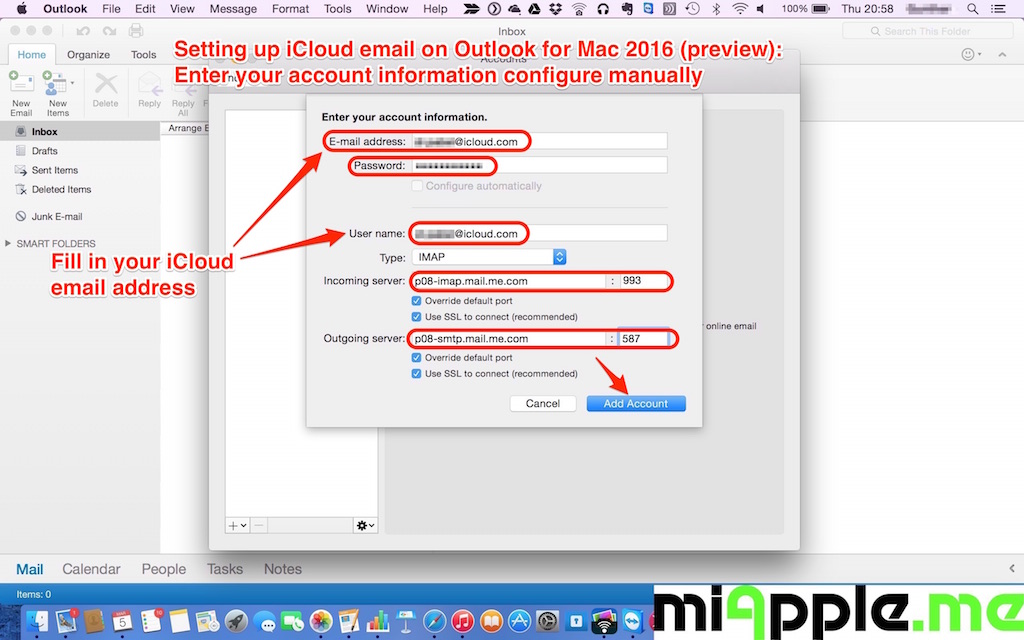How To Have Outlook For Mac Not Download Emails From The Server
Posted By admin On 28.12.18This tutorial will teach you to safely back up Outlook emails, contacts, appointments and tasks automatically or manually in all versions of Outlook 2016, Outlook 3013, Outlook 2010, and Outlook 2007. If you are using Microsoft Outlook for most of your email communications, there's no need to dwell on how important it is to safely store, import and export all that data. Whilst Outlook emails (as well as calendars, contacts, tasks, and notes) are stored within the Outlook Data File (.pst) file, some other files and settings such as account settings, signatures, templates, custom forms are stored in separate files. Therefore, if you want to transfer your Outlook account from the old computer to a new one in full, backing up only the.pst file may not be enough. In this tutorial, you will find the detailed instructions on how to backup Outlook mails and other items automatically or manually and learn which method is best to be used in which scenarios. • • • • • • • • How to backup Outlook emails by exporting There may be different situations when you might want to back up Outlook mails - for example, when you are moving to another computer or restoring your Outlook data after a crash. In the second case, having a healthy Outlook backup can significantly alleviate the pain, so it's a wise strategy to back-up your Outlook emails once in a while, especially if you are using email for work.
I'm not receiving email or other items in my Exchange account in Outlook for Mac. Cause: Outlook is not connected to the server that is running Microsoft Exchange Server. Solution: Check your Microsoft Exchange server connection. On the Tools menu, click Accounts. I have a new laptop with Outlook 2016 using IMAP but my emails were disappearing after 14 days. My email host Tech support was unable to help. Well after reading your Outlook Tips I realized that my desktop with Outlook 2010 using POP3 was controlling the duration that the files stayed on the server not the new laptop.
The most safe and reliable way to make an Outlook backup is to let Microsoft Outlook export a.pst file for you automatically. Apart from emails, this will also save contacts, calendars, tasks, and notes. How to backup Outlook 2013 and Outlook 2016 To backup emails in Outlook 2013 and 2016, perform the following steps. • Open your Outlook, and click File > Open & Export > Import/Export.
• The Import and Export Wizard will start up, you select Export to a file, and click Next. • Select Outlook Data File (.pst), and click Next.
• Select the email account that you want to back up, and make sure the Include subfolders box is selected. This will export the contents of all folders, including mail folders (Inbox, Outbox, Drafts, etc.), Contacts, Calendar, Tasks, Notes, and Journal. Or, you can select a specific folder to export, say Inbox. It's not possible to select multiple folders, so if you want to back up a few folders, you will have to repeat the process for each one individually.

• The wizard will suggest saving a copy of your.pst file to the default location: C: Users Documents Outlook Files backup.pst If you have no objections, simply click Finish. Avast antivirus for mac allow. To save your Outlook backup to another place, click the Browse button, select the desired location, and click OK. If you are exporting to an existing.pst file, choose the desired option for duplicate items. The default Replace duplicates with items exported works fine in most cases.
If you've exported your Outlook data before, the previous folder and file name will appear. To prevent overwriting the previous backup, be sure to type a different file name before clicking OK. • If you are creating a new.pst file, Outlook will suggest protecting it with password, which does make sense if your Outlook items contain sensitive information, and you want to ensure that no one but you can access them. In this case, enter and confirm a password, and then click OK. If you don't want to password protect the backup, leave both fields empty, and click OK.